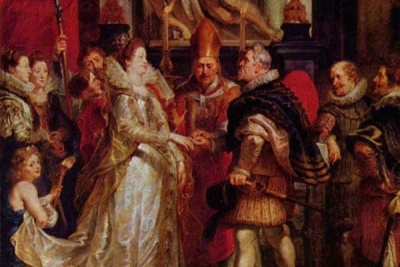
The Medici of Florence were the greatest of the many brilliant families who contributed to the cultural splendour and magnificence, as well as the political history, of the Renaissance in Italy. Their first successes were gained as merchants, but the real founder of their wealth and power was Giovanni de Medici (1360-1429) who amassed a great fortune and turned banker and patron of the arts. His sons Cosimo and Lorenzo founded the two main branches of the family.
Cosimo (1389-1464) became the virtual ruler of Florence through his skill in securing the election of friends to positions of power in the city government. He greatly added to the family’s riches by developing a large banking and commercial business with branches in London, Rome, Venice, Geneva. Bruges and other centres. He gave generous patronage to artists, writers and scholars, founded libraries and erected splendid buildings.
His most famous descendant was his grandson Lorenzo Magnificent (1449-92), who was the patron of Michelangelo and the painter Botticelli and himself a man of learning. He escaped the fate of his younger brother Giuliano, who was stabbed to death in a conspiracy by florentine rivals, and proved himself an able administrator. His influence among church leaders in Rome secured the election as Cardinal of his 14-year-old son Giovanni, who was later elected Pope Leo X. A nephew of Lorenzo became Pope Clement VII.
In 1560 the two chief-branches of the family were united under Cosimo the Great (1519-74), who took the title of Grand Duke of Tuscany. During the next 200 years members of the Medici married into various royal houses of Europe. the most famous of these was Catherine de Medici (1519-89), great-grand-daughter of Lorenzo the Magnificent, who married one French king. Henri II, and became the mother of three others, Francis II, Charles IX and Henri III. She was held chiefly responsible for the massacre of Protestants on St. Bartholomew’s Eve, August 24, 1572. The ruling branch of the Medici died out in 1737, but descendants of other branches still live in Italy today.
Picture Credit : Google



